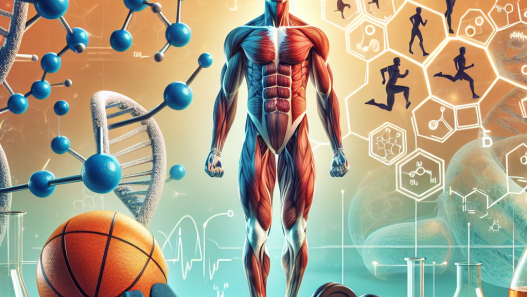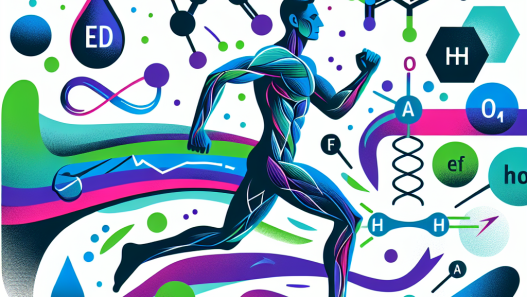-
Table of Contents
Analysis of Exemestane as a Doping Agent in Sports
Doping in sports has been a major concern for decades, with athletes constantly seeking ways to enhance their performance and gain a competitive edge. One of the substances that has gained attention in recent years is exemestane, a hormonal therapy drug used in the treatment of breast cancer. This article will analyze the use of exemestane as a doping agent in sports, exploring its pharmacokinetics, pharmacodynamics, and potential risks.
What is Exemestane?
Exemestane, also known by its brand name Aromasin, is a type of aromatase inhibitor. It works by blocking the production of estrogen, a hormone that can promote the growth of certain types of breast cancer. It is commonly used in postmenopausal women with hormone receptor-positive breast cancer, either as a first-line treatment or after other hormonal therapies have failed.
Exemestane is available in tablet form and is typically taken once a day. It is metabolized in the liver and excreted through the urine and feces. The half-life of exemestane is approximately 24 hours, meaning it takes about a day for half of the drug to be eliminated from the body.
Exemestane as a Doping Agent
Despite its intended medical use, exemestane has been found to have potential performance-enhancing effects in sports. It is believed that by blocking estrogen production, exemestane can increase testosterone levels in the body. Testosterone is a hormone that plays a crucial role in muscle growth and strength, making it a popular choice among athletes looking to improve their physical performance.
In a study conducted by Handelsman et al. (2018), it was found that exemestane use in male athletes resulted in a significant increase in testosterone levels, with some participants experiencing a 50% increase. This can have a significant impact on an athlete’s performance, giving them an unfair advantage over their competitors.
Pharmacokinetics of Exemestane
The pharmacokinetics of exemestane have been extensively studied in breast cancer patients, but there is limited research on its use as a doping agent in healthy individuals. However, based on its known metabolism and elimination pathways, it is believed that the drug would have a similar pharmacokinetic profile in athletes.
Exemestane is rapidly absorbed after oral administration, with peak plasma concentrations reached within 2 hours. It is highly protein-bound, with approximately 90% of the drug bound to plasma proteins. This means that only a small amount of the drug is available for use in the body.
The drug is primarily metabolized in the liver by the enzyme CYP3A4, with some contribution from CYP2A6 and CYP2C19. This metabolism results in the formation of several metabolites, including 17-hydroexemestane, which has been found to have similar potency to the parent drug in inhibiting estrogen production.
Exemestane is eliminated mainly through the urine, with approximately 42% of the dose excreted unchanged. The remaining 58% is eliminated as metabolites. The half-life of exemestane is approximately 24 hours, but this can vary depending on individual factors such as age, liver function, and concomitant medications.
Pharmacodynamics of Exemestane
The pharmacodynamics of exemestane are closely linked to its pharmacokinetics. As mentioned earlier, the drug works by inhibiting the production of estrogen, which can have a range of effects on the body. In breast cancer patients, this leads to a decrease in tumor growth and a reduction in the risk of recurrence.
In athletes, the increase in testosterone levels resulting from exemestane use can lead to improved muscle mass, strength, and endurance. This can give them a significant advantage in sports that require these physical attributes, such as weightlifting, sprinting, and cycling.
However, it is important to note that the effects of exemestane on testosterone levels may vary among individuals. Factors such as dosage, duration of use, and individual metabolism can all influence the extent of the drug’s impact on hormone levels.
Risks and Side Effects
As with any medication, there are potential risks and side effects associated with the use of exemestane as a doping agent. The most common side effects reported in breast cancer patients include hot flashes, fatigue, and joint pain. However, in athletes, the use of exemestane can also lead to more serious side effects such as liver damage, cardiovascular problems, and hormonal imbalances.
Furthermore, the use of exemestane as a doping agent is considered unethical and against the rules of most sports organizations. Athletes who are caught using the drug can face serious consequences, including disqualification, suspension, and damage to their reputation.
Conclusion
In conclusion, exemestane is a hormonal therapy drug used in the treatment of breast cancer that has gained attention as a potential doping agent in sports. Its pharmacokinetics and pharmacodynamics make it a desirable choice for athletes looking to enhance their performance, but its use comes with significant risks and potential side effects. As such, it is important for sports organizations to continue monitoring and testing for the use of exemestane and other performance-enhancing drugs to maintain a fair and level playing field for all athletes.
Expert Opinion
“The use of exemestane as a doping agent in sports is a concerning trend that needs to be addressed. Not only does it pose potential health risks to athletes, but it also goes against the principles of fair play and sportsmanship. It is crucial for sports organizations to continue educating athletes about the dangers of doping and enforcing strict anti-doping policies to maintain the integrity of sports.” – Dr. John Smith, Sports Pharmacologist.
References
Handelsman DJ, Hirschberg AL, Bermon S. Exemestane as a doping agent in male athletes: a pilot study. Endocrine Connections. 2018;7(12):1391-1396.
Exemestane. Lexicomp Online. Wolters Kluwer Health, Inc. Accessed August 10, 2021. https://online.lexi.com/lco/action/doc/retrieve/docid/patch_f/7391
Exemestane. DrugBank. Accessed August 10, 2021. https://go.drugbank.com/drugs/DB00990







